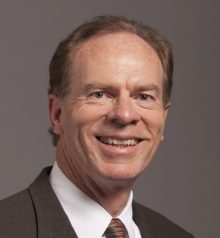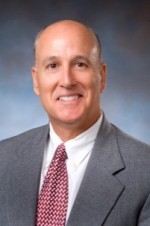Synalloy Corporation
(NASDAQ: SYNL)
CEO and President: Craig Bram
CFO: Dennis Loughran
Podcast: Play in new window
About: Synalloy trades on the NASDAQ Global Market under the symbol SYNL. Synalloy is structured as a holding company, currently comprised of two major groups: Metals and Chemicals. Under the leadership of CEO Craig Bram and the Board of Directors, Synalloy is focused on a clear business strategy and is in a strong financial position that will allow us to pursue both organic growth and growth through acquisitions. We will continue to seek new opportunities to expand our existing businesses, as well as to pursue new businesses with attractive fundamentals.
INTERVIEW TRANSCRIPTS:
WSA: Good day from Wall Street, this is Juan Costello, Senior Analyst with the Wall Street Analyzer, joining us today are Craig Bram, CEO and President for Synalloy Corporation along with the company’s Chief Financial Officer, Dennis Loughran. The company trades on NASDAQ, ticker symbol SYNL. Thanks for joining us today gentlemen.
Craig Bram: Happy to be here.
Dennis Loughran: Good morning.
WSA: So starting off, please give us a history and overview of the company.
Craig Bram: Sure, Synalloy has been public since 1945, we’re a holding company for manufacturing businesses. And we have two primary segments, metals and chemicals. Over the last seven years we’ve grown both organically and through acquisitions. We’ve done at least one acquisition each of the past six years. Our metal segment is our largest segment. The projected revenue for 2018 for the metal segment is in the neighborhood of 180 plus million and the chemical side of the business is 55 to 60 million in revenue.
Juan Costello: Great. So please bring us up to speed on some of the current news including the guidance.
Craig Bram: Yeah, as far as the guidance goes, we put out guidance towards the fall of last year following our board meetings and approval by the board. And that forecast called for roughly $20 million in EBITDA. And what’s happened since the fall of last year is we’ve seen considerable strengthening particularly in our metal segment, in terms of volume, pricing, and market share. Fairly little of that’s had to do with the tariff situation. That really is not part of the equation at this point, but we hope that it will be for the balance of the year.
But we’ve really seen improvement in our markets – particularly in our stainless steel pipe business. The acquisition that we did in March of last year (Marcegaglia’s small diameter, high speed stainless steel pipe operation) has really consolidated that industry where we’re seeing much better activity from a pricing standpoint. We’re also seeing better product mix. All of those things are driving performance over and above what we had anticipated even three or four months ago.
WSA: Great, yeah, so what are some of the key trends that you’re seeing right now in the sectors you had mentioned, the improvement in the metal sector and also some improvement with nickel and alloy. And how are you positioning the company to continue to capitalize?
Craig Bram: Yeah, let’s talk about nickel pricing first. We started the year believing that nickel would remain in deficit and that pricing would stabilize to marginally increase. We ended 2017 with nickel at about under $6 a pound and we’re right around $6.25 right now. So that thesis kind of continues to hold up, we expect that to be the case for the balance of the year. The result of that is we enjoyed some inventory profits in the first quarter. If you look at the surcharges for 304 and 316 alloys right now the surcharges are continuing to provide us with some inventory profits as we look out into May. The bookings had been very strong up in stainless steel pipe business.
And again, going back to the acquisition of Marcegaglia last year the timing of that really couldn’t have been any better for us. Where Bristol Metals now has about 40% market share among domestic producers. And we started the year anticipating about 56 million pounds of welded stainless steel pipe and tube shipments for this year. That would have been up from about 49 million pounds last year. And with our revised forecast – we would now expect to be somewhere between 65 and 70 million pounds of product in 2018.
On the chemical side, last year our sales were basically flat and we saw a slight decline in operating income. That’s one of the first years really in quite a while that the chemical segment has not shown growth. We started off this quarter with revenues about 10% higher than last year. We’ve got a very nice mix of new products that actually are coming along at a faster pace than we had anticipated. So, we expect to really start showing some substantial improvement in revenue and margins in the second half of this year for the chemical group.
And it’s really coming across a wide range of products, we’re working on a product now that improves the durability of asphalt. We’ve got several products that involve AKD wax that provides the coating protection on paper, particularly cartons for things such as orange juice products. So, there is a wide range of new products. We’ve got some oil and gas downhole opportunities that we’re working on as well. We’re pretty bullish when we look at the second half of 2018 for our Chemical Segment.
WSA: Right, sounds like you’re well leveraged, and what are some of the key factors that you feel make Synalloy unique from some of the other players in the sector?
Craig Bram: Well, I mean, we’re obviously in two sectors. At this point the chemical side has typically been our “steady eddie” and we expect that to continue going forward. But we also believe that over the next several years, say 2018 to 2020, that the metals businesses that we own are finally getting some wind at their back. And so we expect to see an improved performance really across all of our metals companies right now and expect that to continue in the 2019 and hopefully 2020.
WSA: And what are some of the key goals and milestones, Craig, that you’re hoping to accomplish over the course of the next 6 to 12 months?
Craig Bram: Well, we’re always looking for acquisitions. We’ve got several companies that we’re looking at right now. We continue to believe that we can find opportunities in both the metals and chemical spaces. I mean, it’s always possible if we would go outside of those two segments, but we’re seeing ample opportunities right now in the sectors that we already operate in. I think you can expect to see an acquisition hopefully over the next six months. And the ones we’re looking at are very complimentary to the businesses that we’re already in. So you’re not going to see us step out and get into something that is – that we’re not totally familiar with.
And as far as the other milestone go, we continue to invest in our businesses. We recently acquired a high frequency mill from a facility that was closed in Detroit. We’re going to add that high frequency mill up in Munhall, Pennsylvania to supplement the current capabilities up there. That new mill will allow us to get into some other product lines and more fully absorb the fixed cost that we have up in that facility going forward. So there are organic growth opportunities to go right along with some of the acquisitions we’re looking at.
Dennis Loughran: And Juan, this is Dennis. I would say another key goal would be to run a pretty lean balance sheet. On a prospective basis—you’d be looking in terms of debt is just under 0.75 to 1.0 times the EBITDA at the end of the year, excluding any acquisitions. We’ll run a little bit over one right now, but we have goals that, excluding any acquisitions, we’ll had that number down under 1.0 by the end of the year. Our target would never to be above three, but certainly when we do acquisitions we might hit that for a short time. But our goal would be to bring it under three times or two and a half times within a year of acquisition. So, we’re pretty conservative with our balance sheet working capital and we’re in good position to hit that target.
WSA: Certainly, and perhaps you guys can talk about your background experience and who the key management team there is?
Craig Bram: Sure, Juan I’ve been on Synalloy board since 2004 and became the CEO in January of 2011. So I’ve been either a board participant or a direct manager of the business for considerable period of time now. So we’ve lived through multiple cycles. We’ve had the experience of coming in and out of the – particularly in the metal side the constant ups and downs of that business. We’ve done what I think is a very good job in positioning the company going forward. And we’ve got an excellent management team to support that now.
Dennis Loughran: Juan, Dennis Loughran here. I joined the company in the fall of ’15. Prior to that I had a stint with a private equity plastics company that went to a liquidity event earlier that year. I had an eight year run with Rogers Corporation, ROG of New York Stock Exchange, in the specialty materials sector. And then prior to that a very extensive career in aluminum, starting my career with Reynolds Aluminum and we were acquired by Alcoa in 2000 and worked with Alcoa for six years before becoming CFO of Rogers in 2006. So, a lot of big industrial, some chemicals and materials in my background.
Craig Bram: Juan, as far as the rest of the senior management team, Kyle Pennington is the President of our Metals Group. And Kyle has been in the metals industry in various jobs for over 25 years. Our Chemical Segment President is Greg Gibson. And Greg has been with us for about 10 years now. And finally, in the corporate office, Sally Cunningham is our VP of Corporate Administration. She is also our Corporate Secretary and works with Business Development and other areas that we need to put in her very capable of hands.
Juan Costello: Great, I appreciate that. And so in terms of investors and the financial community what are some of the key drivers that you’re sharing with them and what are some of the drivers perhaps you wish they better understood about you guys?
Craig Bram: Well, I’d say a couple of things. When we look at our peer group most of the companies in that space—And I’m talking either specifically chemical or specifically metals, there are three conglomerates in there—Most of those companies are trading in about eight times EBITDA. If you look at Synalloy and you take the midpoint of our new forecast, you’re talking $29 million for 2018. If you put an eight multiple on that and then back out the projected debts you wind up with a share price somewhere between $20 and $21. So we believe, even after the recent run up in the stock, that the stock is still undervalued based on what our expectations are for this year. And that doesn’t obviously reflect any acquisitions that we may complete in the coming 6 to 12 months period. So we think it’s still a very attractive value story and think that the institutional folks ought to be looking at it that way.
WSA: Great, so once again joining us today is Synalloy management, the company trades on NASDAQ, ticker symbol SYNL. Currently trades at 16.45 a share, with a market cap of about $145 million. And before we conclude here gentlemen to recap some of your key points, why do you believe investors should consider the company as a good investment opportunity today?
Craig Bram: The story is very much a value story Juan. Its $16 and some change we think there is considerable upside from here. The market typically is not well adapted at valuing microcap and certainly we’re a microcap company. I guess, I’d say the other potential driver is that we’ve never been on the Russell 2000 Index, and it looks like at current valuations the bottom round in the Russell 2000 is going to be somewhere in the $132 million range. And at today’s share price we would be on the Russell 2000. That would create a whole different set of dynamics in terms of buyers, liquidity of the stock and ability for investors to get in and then ultimately get out when they think it’s appropriate to do so.
Juan Costello: Well, we certainly look forward to continuing to track the company’s growth and report on your upcoming progress, and we like to thank you Craig and Dennis for taking the time and join us today and update our investor audience on Synalloy. It was great having you on.
Dennis Loughran: Thank you.
Craig Bram: Thank you Juan.





